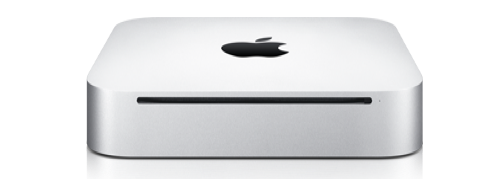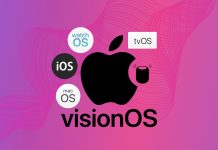When the Apple store went down bright and early (Around 7AM ET/4AM PT yesterday) everybody knew what was coming; iPhone 4 pre-orders. What most weren’t expecting were completely revamped Mac Minis. This was a completely quiet announcement. I didn’t find out about them until I opened up a new window in Safari and saw them on the Apple Start page.
The newly upgraded, and completely redesigned, Mac Minis are a stark departure from the previous generation. Not only on the inside, but also the physical dimensions and materials have changed. Instead of being 6.5″ x 6.5″ x 2.0″ measurements the new Mac Mini is 7″ x 7″ x 1.4″. This is a drop in cubic measurement by 19%.
New Mac Mini
Despite the slight physical dimensional changes, the body of the Mac Mini is now of the same Unibody manufacturing as a majority of the Apple product line. This makes it a bit sleeker in terms of outside looks.
The main chipset hasn’t changed much, but the processor speeds have changed to 2.4GHz and 2.66GHz from 2.26GHz and 2.53GHz. Nothing earth shattering.
A more significant change is the memory. While the speed of 1066MHz hasn’t changed, the maximum memory supported has been increased from 4GB to 8GB. This is a significant bump; particularly on the Mac Mini Server end.
With more memory comes the ability to run better graphics, and Apple didn’t skimp. The new Mac Minis include the Nvidia GeForce 320M with 256MB of DDR3 that is shared with the main system memory. If you customize with 8GB of memory you’re only allocating 3% to the video. It’s not really a significant amount.
The hard drive choices are still the same at 320GB and 500GB options.
Networking is still the same, Gigabit ethernet plus 802.11 A/B/G/N and Bluetooth 2.1 + EDR.
One interesting change is the power. The Maximum has changed from 110W maximum to 85W. This is a significant energy savings for those who want to conserve electricity as much as possible. Not only is power disappearing but so is the external power brick. The new Mac Mini line only has a single power cable that goes from the Mac Mini to the power outlet. This could potentially be an issue if the power supply goes out and it needs to be replaced; although for those who want fewer wires this is a great change. Interestingly, the new Mac Mini only draws 10 watts while in sleep mode. That is roughly the same power needed for a single compact-florencant light bulb.
Old Mac Mini
The ports have changed slightly. The FireWire 800 port remains, but there is one less USB 2.0 port. The new models have only 4 USB 2.0 ports. The Mini DVI port has been removed and is now replaced by the current holy-grail of ports, HDMI.
This is the biggest shock, short of the last item, out of the whole refresh. It was only a matter of time before the unibody design was released. With the slightly shorter form factor and HDMI this positions the Mac Mini as a great device within a Home Theater setup. That said, it does have a mini-display port as well.
The last item is the price. It has increased $100 from a base price of $599 to $699. While this may not seem like a big difference the price increase is further solidifying Apple as a higher-end niche. The odd part, regarding price, is that the Mac Mini server price remains the same at $999. I wonder if this price increase allows for an even lower-end machine to arrive later in the year.
With these changes I’m wondering what is in store for the Apple TV. Are we going to see a similar form factor with less storage but a faster processor? Is the Apple TV going to disappear entirely now that we have a refreshed Mac Mini? I don’t think it’ll disappear, although I think we could see a very slimmed down Mac Mini that replaces the Apple TV. Say a solid-state drive of 16GB, HDMI, optical out, one USB Port, no Firewire, HDMI and the same form factor. It will be interesting to see what Apple has in store later in the year.









